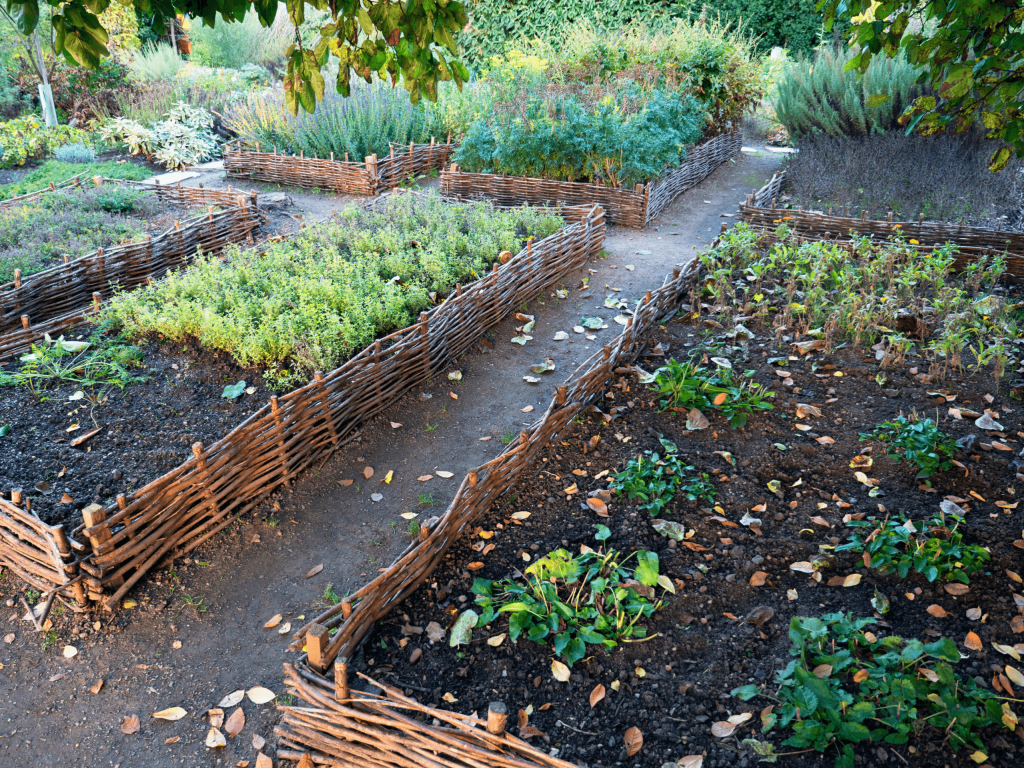As the vibrant colors of summer begin to fade, it’s time to shift focus to the upcoming fall season. For garden enthusiasts in places such as North Carolina, this transition presents a golden opportunity to ensure your garden thrives and flourishes even as the temperatures start to cool.
Properly prepping your garden for the fall can yield a bountiful harvest, vibrant foliage, and a landscape that remains beautiful throughout the changing seasons.
To ensure that such beautiful life, guided by our white blooming plants guide, continues to thrive in your garden, check out these gardening tips below.
Clear Out Summer Growth and Tidy Up the Garden
As the fall season approaches, it’s crucial to engage in effective fungal disease management in gardens. Start by tidying up your garden; remove any lingering weeds, plants, and debris from your garden beds. This step is essential not only for aesthetics but also for removing potential breeding grounds for white fungus and other plant diseases.
This will create a clean slate for your fall planting, and it also removes any hiding spots for pests and diseases that can thrive over the winter, causing trouble for the next growing season.
Protect Your Equipment in a Shipping Container Shed
Another important first step is to safely tuck any gardening equipment or plants that require indoor temperatures during the winter months in a protective shed. You can protect your belongings by keeping them inside a repurposed shipping container shed.
Shipping container sheds are exactly what they sound like: garden sheds made out of repurposed, steel shipping containers. They provide outstanding protection to your belongings because of their durability and resistance to outdoor forces, such as weather and pesty animals.
They can fit large and heavy equipment and you can even customize them to your personal aesthetics and needs.
Some people even convert old containers into personal urban gardening centres, providing space for plants, flowers, and more.
Assess Soil Health
As a gardener, you’ll already know that healthy soil is the foundation of a successful and happy garden. This knowledge is crucial in selecting shrubs that will thrive in your garden’s specific conditions. Consider conducting a soil test to determine its pH levels and nutrient content, which will help you choose the right shrubs for your soil type.
Depending on what you discover, you might want to consider amending the soil with lime to the pH or sulfur to lower it.
Incorporating organic matter, like compost, will enhance the soil’s structure and nutrient availability.
Select the Best Plants
Choosing the right plants for your fall garden is critical. In a state like North Carolina, the fall is season is typically cooler in temperature and has shorter daytime hours.
Go for cool-season vegetables like kale, lettuce, spinach, and radishes because they thrive in cooler temperatures. Furthermore, consider fall-blooming perennials and annuals such as aster, chrysanthemums, and pansies to add a burst of color to your garden.
Don’t Forget the Frost
As the summer is quickly fading, the threat of frost becomes more serious. Keep an eye on the news and stay informed about the first expected frost date in your area.
Be prepared to cover any sensitive plants with frost cloth or blankets overnight to ensure they’re protected from freezing temperatures.
The fall can be equally as beautiful as the summer, with its changing colours and crisp, autumn breeze. And with these tips, you can ensure that your garden remains luscious, healthy, and bountiful during the seasonal transition.

